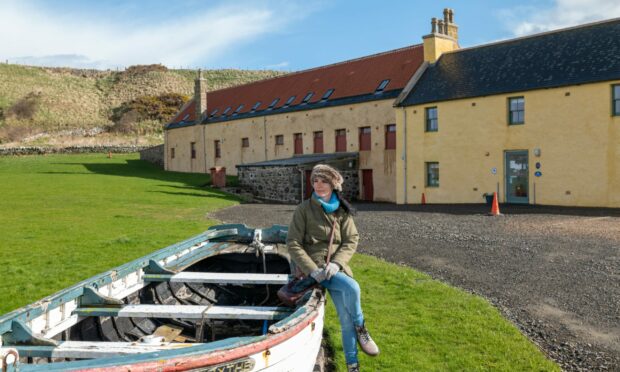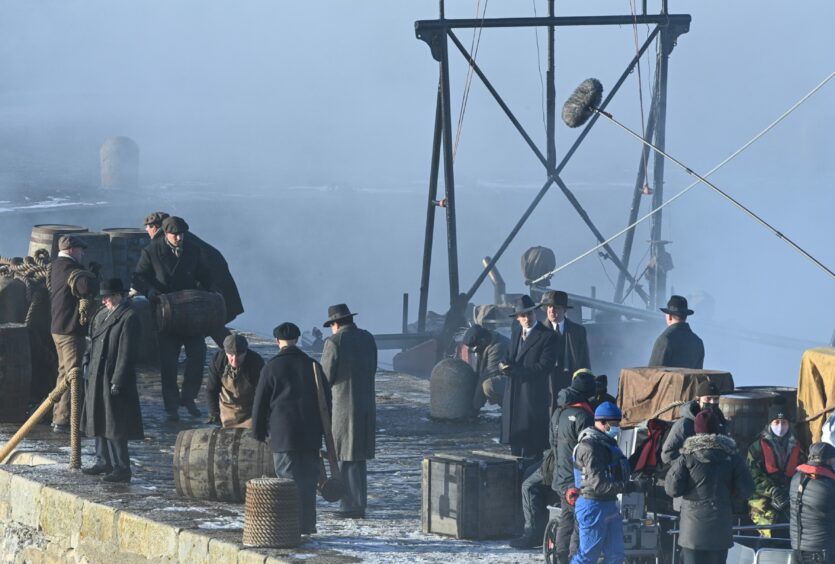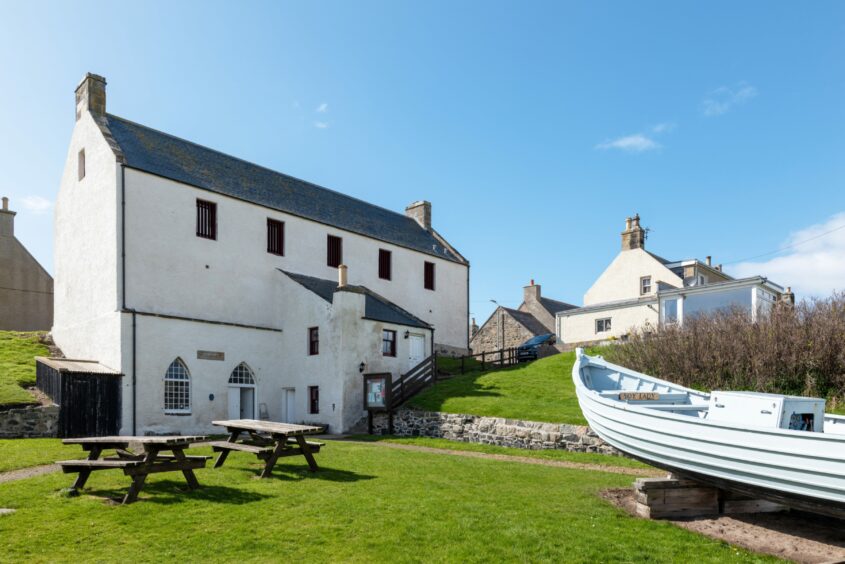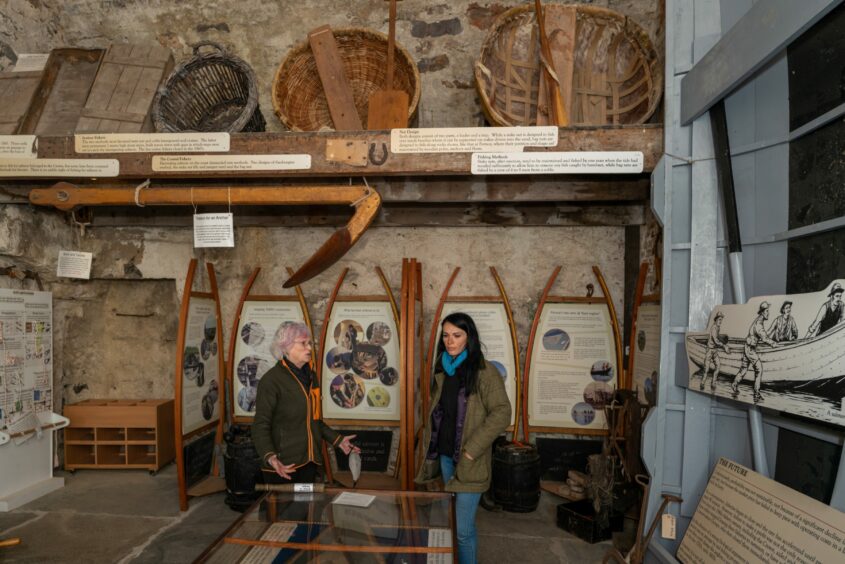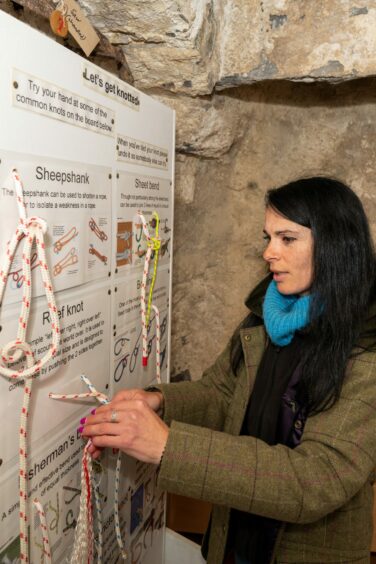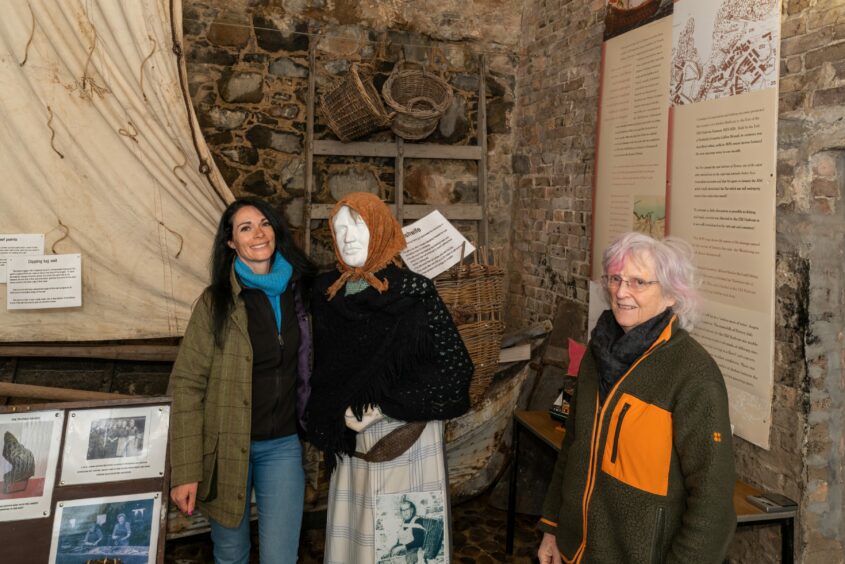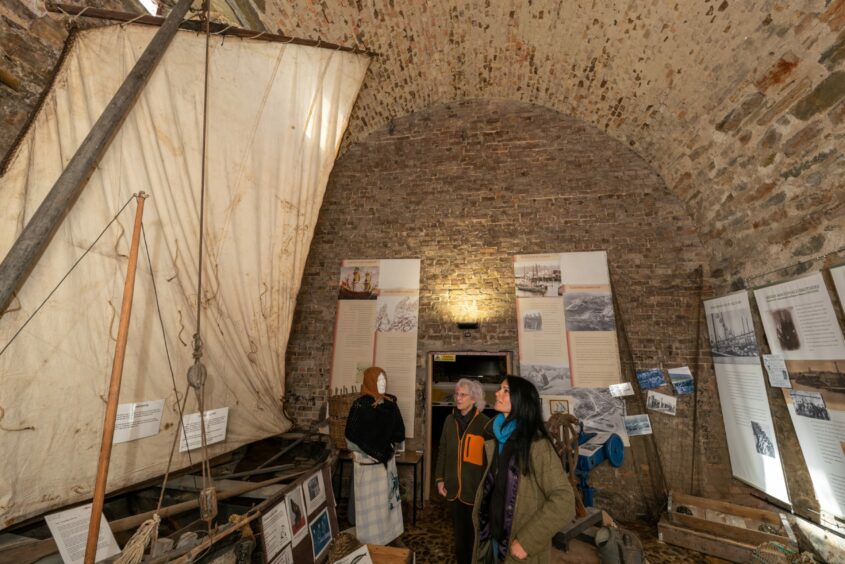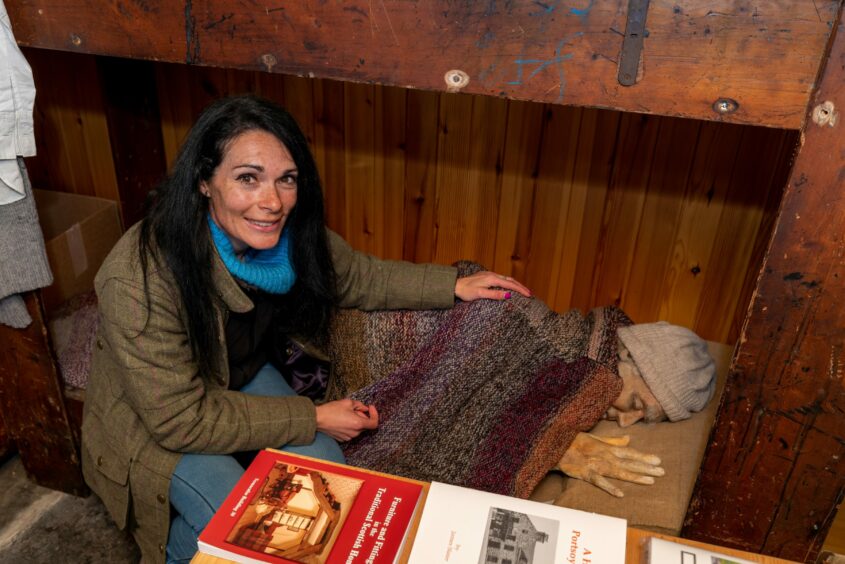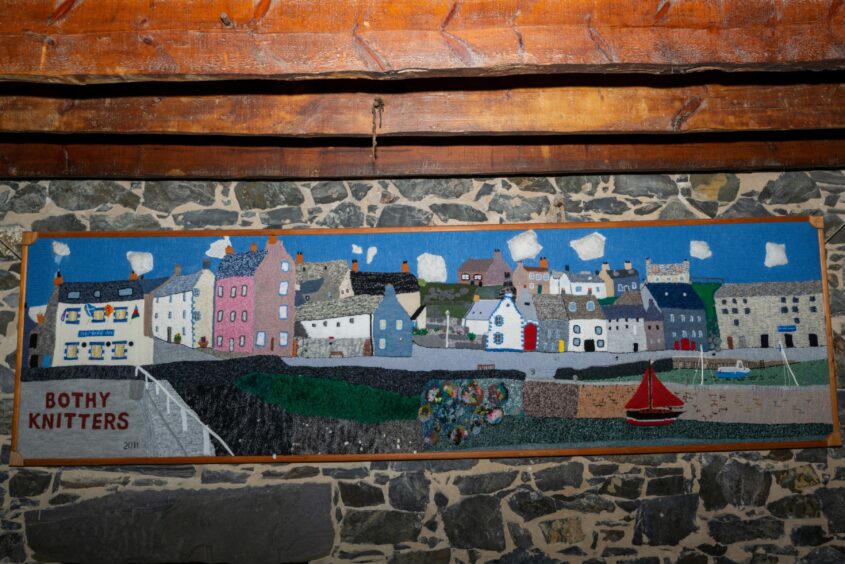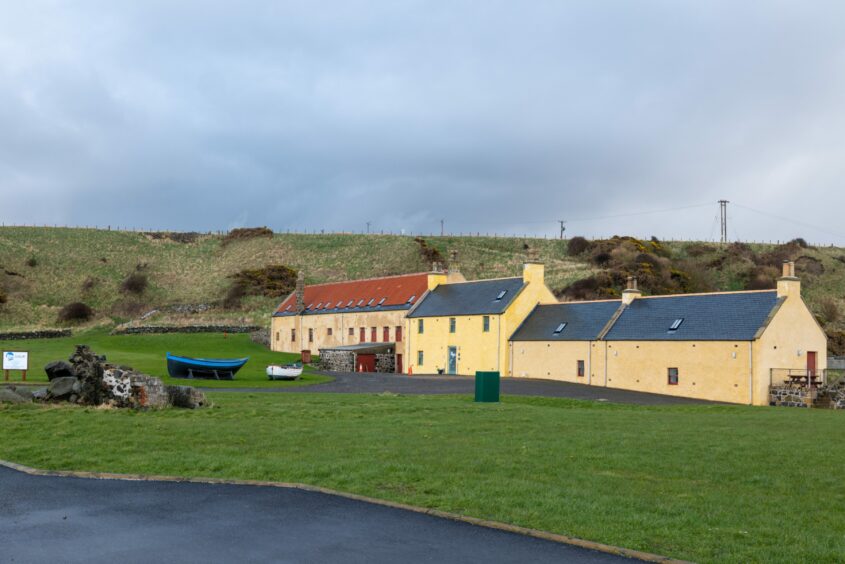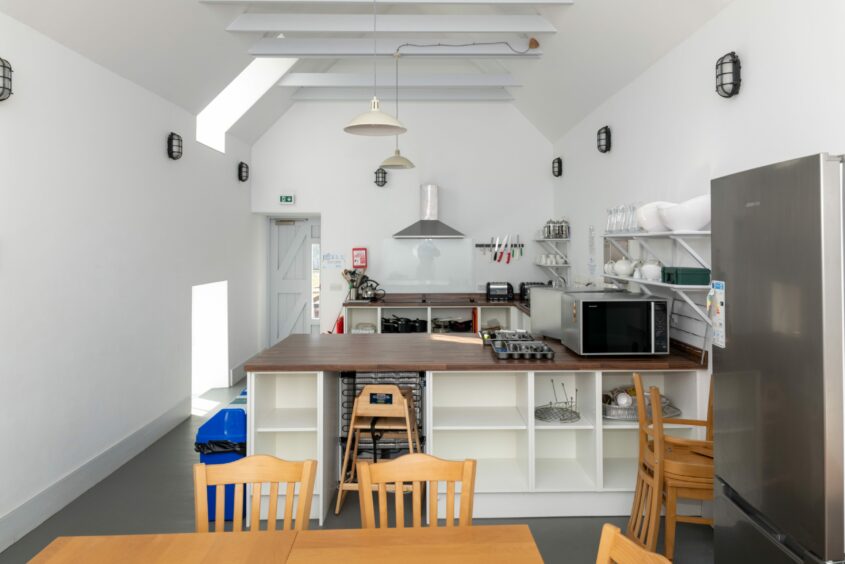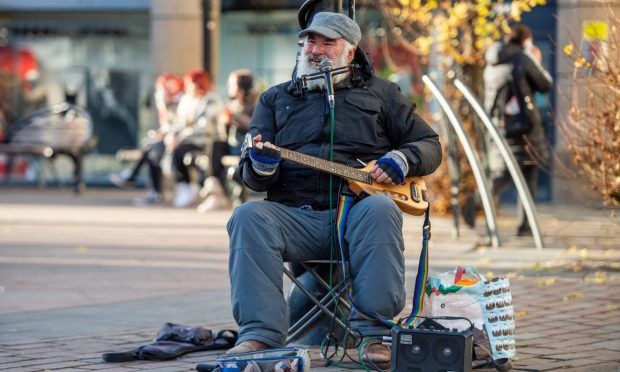Portsoy was used as a film location for Peaky Blinders, and there’s loads to discover in the old Aberdeenshire fishing village, as Gayle finds out…
It’s no wonder Portsoy was chosen as a film location for Peaky Blinders – it’s absolutely gorgeous.
The production crew pitched up in February 2021 and transformed the village’s 17th Century harbour into a French port and its quaint Shore Inn into fictional Hotel Lalanne, complete with filthy windows and a tattered sign – for the sixth and final series of the hit gangster drama.
A stellar cast including Cillian Murphy (Tommy Shelby) and Finn Cole (Michael Gray) shot for five days, bringing a huge buzz to the village and helping to place it on the Scottish film location map.
From impressive captains’ houses to tiny fishermen’s cottages, Portsoy oozes charm, and there’s plenty to explore in the warren of streets radiating from the harbour.
Keen to hang out in the village for an afternoon, I contact Anne McArthur, who has her finger in a lot of Portsoy’s pies.
Salmon Bothy
As director of the Salmon Bothy, a former working salmon house which has been lovingly restored and comprises a museum, a base for family history research, and a community space, she’s keen to show me around.
“It was used as a salmon house until 1990 when it closed and became derelict,” she tells me.
“Portsoy Community Enterprise (PCE) took it over and reopened in 2009.”
There are three vaulted chambers inside the volunteer-run bothy, with the first exploring the story of salmon fishing via artefacts, storyboards and interactive spaces.
The bothy was constructed in 1834 as a commercial icehouse, salmon net store and repair facility and the chambers were used for packing fish in ice prior to being shipped off.
It’s likely that alongside the salting process, salmon were parboiled and packed into wooden boxes or barrels here, as the chimney flue and iron fixings for ropes and pulleys suggest.
There’s an impressive display of coracles, small boats made out of woven wood, and some old “bag nets”, which were dropped into the sea from buoys to catch fish.
I’m strangely drawn to the “children’s corner” where a display invites me to tie different knots – the reef, sheepshank, bowline and sheet bend to name a few. I’m embarrassingly useless at all of them.
The second chamber has information on smuggling and various trades in the area including Portsoy Buoy Factory and Macdonald’s Foundry.
A panel tells the story of the “Friendship” of Portsoy attempting to smuggle tea from Gothenburg in November 1780 but it was driven ashore sending its cargo of 120 boxes of tea crashing into the sea.”
Then, “assisted” by local fishermen, the crew tried to hide the valuable cargo before customs men arrived from Portsoy.
“Portsoy was a trading harbour and all sorts of things were smuggled – grain, coal, wood, whisky and tea,” says Anne.
“Lots of back passages were found in houses near the harbour.”
I gaze up at an impressive coble (a flat-bottomed fishing boat) and meet a fishwife – well, a dummy dressed as one!
“Fish wives would carry creels full of fish from the market to farmers and get eggs in exchange,” Anne tells me.
The third chamber hosts the Portsoy Marble exhibition and I’m honoured to be the first person to see it.
“Portsoy Marble was famous in the 1700s and even found its way to the Palace of Versailles!” says Anne.
Wee bothy
Just outside is a wee bothy, the sleeping quarters used by fishermen who stayed in bunk beds.
There’s a strange fellow lying in one (a dummy) and he looks scarily realistic!
Upstairs in the community space Anne shows me a stunning tapestry of Portsoy harbour and knitted fish hanging in a net from the ceiling.
“The Bothy Knitters did this!” she smiles. “Isn’t it wonderful?”
All sorts of events are held here, from yoga retreats to book and folk festivals, attracting big names like author Val McDermid and singer-songwriter Ralph McTell.
Sail Loft
My final treat is being shown round – and staying in – the newly revamped Sail Loft bunkhouse.
The buildings this consists of date from the 1700s and include the former sail making loft, a Georgian house and two cottages.
The bunkhouse stands on an area known as the Back Green and was once an industrial site used to manufacture thread for flax.
In the early 1800s, an adjacent building which operated as a rope making business fell into decline and was lost to the sea.
North East Scotland Preservation Trust acquired the sail making factory, house and cottages from Seafield Estate in 2006 and in partnership with PCE undertook the restoration of the buildings: a £2 million project funded by the Heritage Lottery Fund, Coastal Communities Fund and Historic Environment Scotland.
Offering self-catering accommodation for up to 25, it boasts pristine rooms and cracking views of the sea.
I enjoy a fish supper from the Hook, Line and Sinker later that evening, and consider a scoop or two of Portsoy’s famous ice cream, but it’s a tad chilly. I’ll return here, hopefully when the sun’s shining, but whatever the weather, Portsoy is a feast for all the senses.
- The Sail Loft bunkhouse, portsoysailloft.org/, is operated by Portsoy Community Enterprise – the social enterprise which holds the annual Traditional Scottish Boat Festival (on June 18 and 19 this year) and operates The Salmon Bothy, salmonbothy.org/, The Boatshed, and Portsoy Links Caravan Park.
- The remake of 1949 film Whisky Galore starring Eddie Izzard was filmed in Portsoy in 2015.
